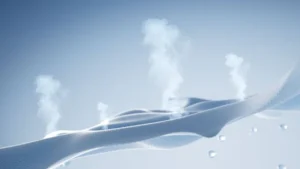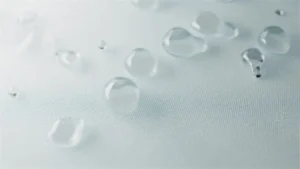
Breathable and moisture-wicking fabrics are some of the most innovative textiles used in the fashion and sportswear industries today. These fabrics are specifically designed to provide comfort and performance by allowing air to circulate through the material and quickly drawing moisture away from the skin. This combination of breathability and moisture-wicking properties makes these fabrics ideal for activewear, outdoor clothing, and various types of sports gear.
In this article, we will explore what breathable and moisture-wicking fabrics are, their advantages, applications, and why they are increasingly popular in the production of high-performance clothing. We will also discuss which types of apparel benefit the most from these fabric technologies and how they contribute to comfort, style, and functionality.
What Are Breathable and Moisture-Wicking Fabrics?
Breathable fabrics are textiles that allow air to flow through them, helping to regulate body temperature by preventing overheating. These fabrics are especially important in warmer climates or during physical activities, as they help maintain comfort by allowing sweat and moisture to evaporate quickly. In contrast, non-breathable fabrics, such as polyester or nylon, trap moisture and heat against the skin, leading to discomfort and excessive sweating.
Moisture-wicking fabrics, on the other hand, are designed to pull moisture (such as sweat) away from the body and move it to the surface of the fabric, where it can evaporate more easily. This moisture management function is essential for keeping the skin dry, reducing the risk of chafing, and maintaining comfort during physical activity.
Together, breathable and moisture-wicking fabrics create the perfect combination for clothing that not only helps regulate temperature but also ensures moisture is dealt with efficiently, making them a top choice for activewear, outdoor clothing, and other performance-based apparel.
How Are Breathable and Moisture-Wicking Fabrics Made?
These fabrics are created using a variety of techniques and materials, including natural fibers, synthetic fibers, and blends of both. The construction of breathable and moisture-wicking fabrics is key to their performance, and several factors contribute to their effectiveness:
1. Fiber Choice
Natural fibers, such as cotton, wool, and bamboo, are naturally breathable and moisture-absorbing, which makes them ideal for creating fabrics that manage moisture and promote air circulation. However, natural fibers may not be as efficient as synthetic fibers when it comes to wicking moisture away from the skin, which is where synthetic options like polyester and nylon come in.
Polyester and nylon are engineered to be moisture-wicking due to their hydrophobic (water-repellent) nature. These synthetic fibers are treated with special finishes that enhance their moisture-wicking properties, making them excellent for use in sportswear and active clothing.
2. Weave and Knit Structures
The way a fabric is woven or knitted affects its breathability and moisture-wicking properties. For example, fabrics with a looser weave allow more air to pass through, enhancing breathability. Similarly, fabrics with a more open knit, such as mesh or perforated fabric, can improve airflow and moisture evaporation.
The specific weave or knit structure can also contribute to the fabric’s ability to wick moisture. Many moisture-wicking fabrics are designed with channels or grooves that help move moisture away from the body and towards the surface of the fabric for quicker evaporation.
3. Fabric Finishes and Treatments
Many breathable and moisture-wicking fabrics are treated with special finishes that enhance their performance. For instance, moisture-wicking fabrics may be treated with hydrophilic finishes, which make the fibers more absorbent and improve their ability to transport moisture away from the skin.
In addition, some fabrics are treated with antimicrobial finishes to prevent odor buildup, making them ideal for athletic wear or clothing worn during strenuous activities.
Advantages of Breathable and Moisture-Wicking Fabrics
The key benefits of breathable and moisture-wicking fabrics are numerous, making them highly sought after for a range of applications, particularly in performance-based clothing. Some of the main advantages include:
1. Enhanced Comfort
The primary benefit of breathable and moisture-wicking fabrics is comfort. These fabrics regulate body temperature by allowing air to flow through the fabric and moisture to escape, keeping the wearer dry and cool. This helps prevent overheating and discomfort, which is especially important in hot climates or during intense physical activity.
2. Improved Performance
For athletes and active individuals, comfort translates to better performance. When clothing manages sweat and promotes airflow, it allows the body to focus on the task at hand without being distracted by discomfort caused by damp or overheated clothing. Whether you’re running a marathon or hiking in hot weather, breathable and moisture-wicking fabrics ensure that you remain comfortable and focused.
3. Prevention of Skin Irritation
Sweat that stays trapped in clothing can lead to skin irritation, rashes, and chafing. Breathable and moisture-wicking fabrics prevent this by drawing moisture away from the skin and promoting evaporation. This is especially important in clothing worn for sports, exercise, or outdoor activities where sweat buildup is common.
4. Odor Control
Many moisture-wicking fabrics are treated with antimicrobial finishes that help reduce the growth of bacteria, which are responsible for the unpleasant odors associated with sweat. This makes breathable and moisture-wicking fabrics ideal for athletic wear, underwear, and any clothing worn for extended periods during physical activity.
5. Quick-Drying
Breathable and moisture-wicking fabrics dry much faster than traditional fabrics, which is essential for activewear and sports gear. After a workout or outdoor activity, clothing made from these fabrics will dry quickly, allowing the wearer to feel fresh and comfortable again without having to wait long for the fabric to dry.
6. Lightweight and Flexible
Many breathable and moisture-wicking fabrics are lightweight and flexible, which allows for greater freedom of movement. This is particularly useful for sports and activewear, where comfort and flexibility are key to performance.
Applications of Breathable and Moisture-Wicking Fabrics
Breathable and moisture-wicking fabrics are used in a wide range of applications, particularly in industries where comfort, performance, and moisture management are essential. Here are some of the most common uses for these fabrics:
1. Sportswear and Activewear
One of the most popular uses for breathable and moisture-wicking fabrics is in sportswear. Whether it’s a pair of running shorts, a workout top, or compression tights, these fabrics are crucial for keeping athletes comfortable during intense physical activity. The moisture-wicking properties ensure that sweat is quickly drawn away from the body, while the breathability helps maintain an ideal body temperature.
2. Outdoor Clothing
Breathable and moisture-wicking fabrics are also essential for outdoor clothing. Items like jackets, hiking pants, and base layers are made from these fabrics to help regulate temperature and moisture, ensuring that adventurers remain comfortable during long treks in varying weather conditions.
3. Undergarments
Moisture-wicking fabrics are ideal for undergarments, including socks, bras, and underwear. These garments are in direct contact with the skin, and moisture management is crucial to prevent irritation, chafing, and odor buildup. Sports bras and compression shorts, in particular, benefit greatly from the combination of breathability and moisture-wicking properties.
4. Workwear and Uniforms
Breathable and moisture-wicking fabrics are also widely used in workwear and uniforms, especially for professions that require physical labor in hot or humid environments. Workers in construction, agriculture, and other physically demanding jobs can benefit from clothing made from these fabrics, as they help to regulate body temperature and prevent excessive sweating.
5. Casual Wear
Breathable and moisture-wicking fabrics are not limited to sports and outdoor gear. Many casual wear items, such as T-shirts, tank tops, and even summer dresses, are now made from these advanced fabrics. The added comfort of moisture-wicking and breathability makes them a great choice for everyday wear, especially in warmer climates.
6. Loungewear and Sleepwear
These fabrics are also increasingly used in loungewear and sleepwear, where comfort and moisture management are essential for a good night’s sleep. Fabrics that wick away moisture and promote breathability help regulate body temperature, ensuring that the wearer stays cool and comfortable while they sleep.
Ideal Clothing Items for Breathable and Moisture-Wicking Fabrics
Some of the best clothing items to make from breathable and moisture-wicking fabrics include:
•Activewear – T-shirts, shorts, leggings, and sports bras made from moisture-wicking fabrics.
•Outdoor Gear – Jackets, base layers, and hiking pants designed for outdoor adventures.
•Undergarments – Moisture-wicking underwear and socks.
•Casual Wear – Comfortable and breathable T-shirts and tank tops.
•Workwear – Uniforms and workwear for jobs requiring physical labor.
•Sleepwear – Comfortable pajamas and loungewear designed to wick moisture.
For high-quality breathable and moisture-wicking fabrics, visit Fabrics-FTY.com and Textile-FTY.com to explore a variety of textiles that meet your performance, comfort, and design needs.
#BreathableFabric #MoistureWickingFabric #ActivewearFabric #Sportswear #OutdoorClothing #PerformanceFabric #ComfortableClothing #QuickDryFabric #SustainableFashion #FabricsFTY



